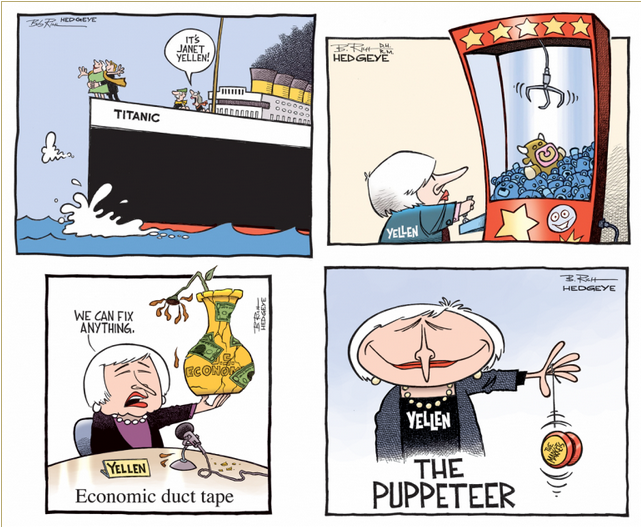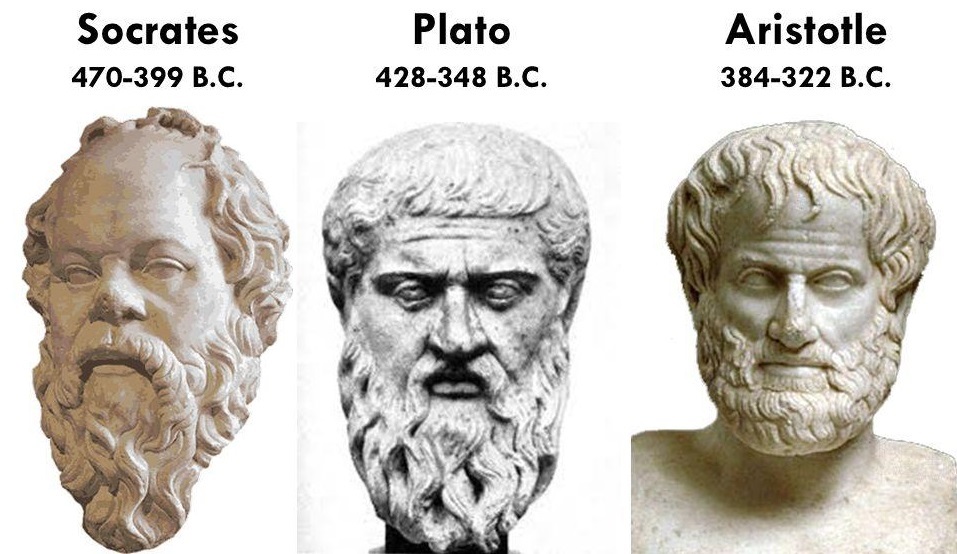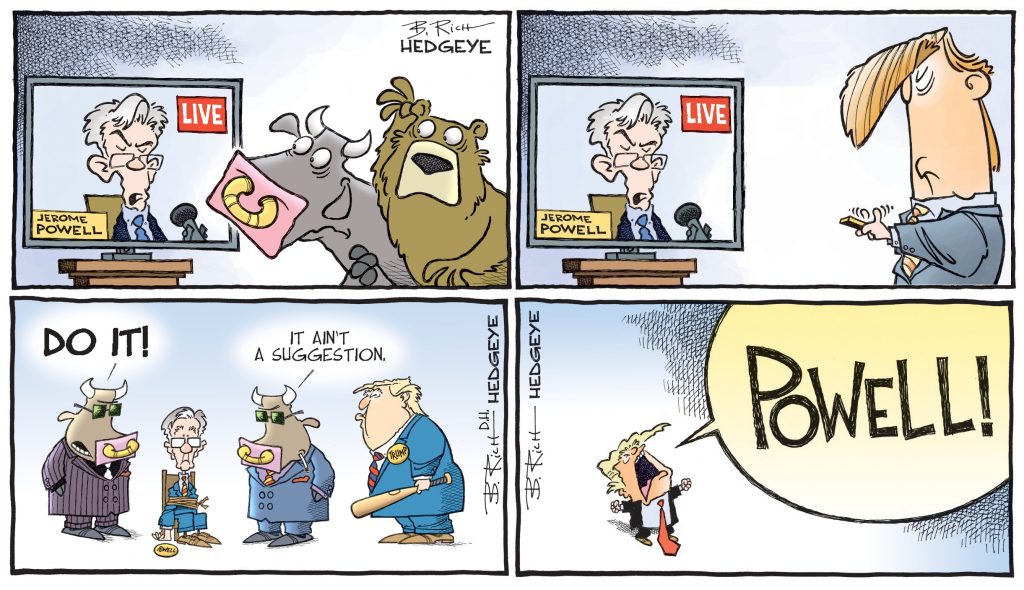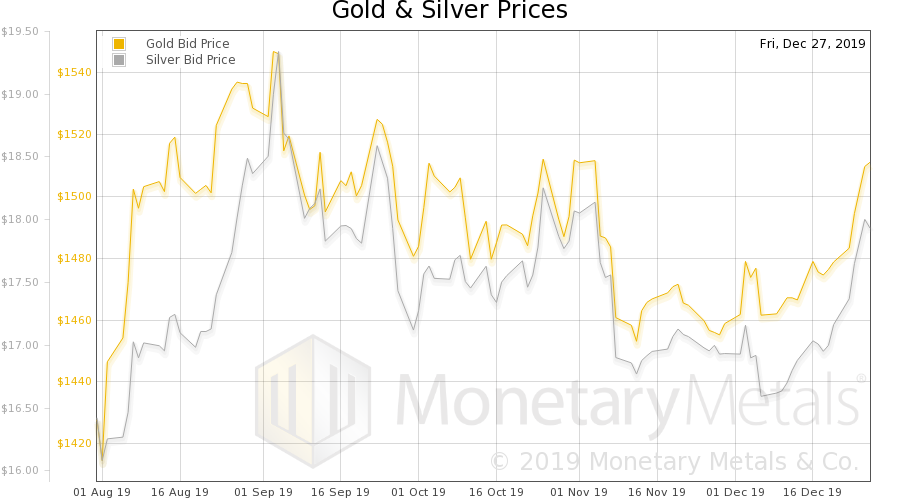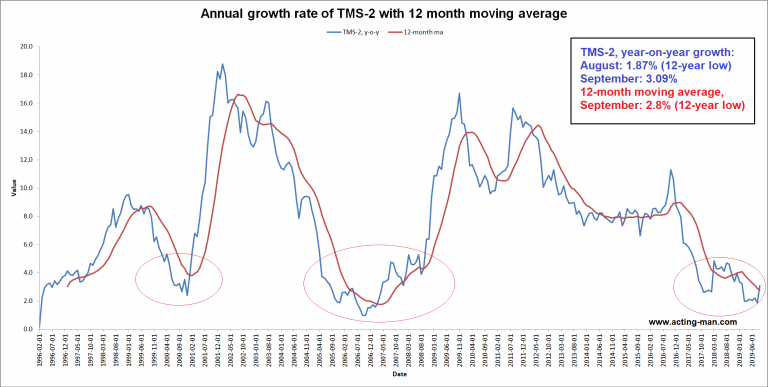A Small and Lonely GroupPARIS – It’s back to Europe. Back to school. Back to work. Let’s begin by bringing new readers into the discussion… and by reminding old readers (and ourselves) where we stand. US economic growth: average annual GDP growth over time spans ranging from 120 to 10 years (left hand side) and the 20 year moving average of annual GDP growth since 1967. Note that the bump in the 70 year average is actually distorted by the output growth boost recorded during WW2 (the charts were made in 2009) – which is actually a prime example of how useless GDP can be as a measure of prosperity. Nevertheless, it is serviceable for the illustration of long term economic growth trends. Exponential credit expansion since the adoption of the pure fiat money system, the associated relentless growth of the welfare/warfare state and persistent declines in average economic growth rates have been going hand in hand, which is no coincidence. |
|
| As a Diary reader, you join a small and lonely group. But we know something others don’t. We understand the real cause of our economic malaise. What malaise, you ask?
Well – how could the richest, most technologically advanced, and most scientifically sophisticated economy stop dead in its tracks? The rate of economic growth has gone steadily downhill for the last 30 years. By some measures, after accounting for the effects of inflation, we’re back to levels not seen since before the Industrial Revolution. And how could such a modern, 21st-century economy make the average person poorer? As we saw recently, when you measure actual inflation, rather than the government’s crooked numbers, the median U.S. household income is 20% lower today than when the century began. And why would our modern economy concentrate wealth in the hands of so few, so that only the richest 1% make any real progress You may also ask a question with an obvious answer: Why are the richest and most powerful people in the country overwhelmingly supporting Ms. Clinton in the presidential race? You find the answer to all these questions the same way: Follow the money. |
Profitable dinner outings with oligarchs: Hillary Clinton, Sir Evelyn de Rothschild, Bill Clinton and Lynn Forester de Rothschild. In May the Rothchilds held a $100,000 per head fund-raising dinner for Hillary Clinton. We infer from this that they are not exactly big Trump fans. Just as Jeb Bush before her, Hillary Clinton is getting stuffed to the gills with money from the infamous 1%. Experience says that when someone throws large amounts of money at a politician, they usually want (and get) something in return. Photo credit: Alan Davidson |
Record HaulMs. Clinton is raising record amounts of money – $80 million in a single month. Big corporations, banks, military contractors, rich people – all are pitching in to make sure Hillary is our next president. Why? Because she promises to protect the status quo. That, of course, is what government always does. A free economy is a precarious place for wealth. It is despised by nearly everyone – especially the rich. In a truly free market, the process of “creative destruction” can’t be controlled. New wealth is born. Old wealth dies. Naturally, people with wealth and power try to use government to get more wealth and power… and to stop the creative-destructive process. They want to protect what they’ve got already. That’s why the real role of government is to look into the future and keep it from happening. Hillary stands like King Canute, promising to stop the tides of economic history. What’s this got to do with money? Let’s ask another question instead: What is the source of Ms. Clinton’s campaign pile? Whence cometh all this lucre? “It comes from rich people,” you will say. But where did the rich get so much money? Ah – that’s where it gets interesting. We remind you of the context: So far this century, only the rich have gotten wealthier. Naturally, they are keen to see the system that gave them – and them alone – such great wealth continue. |
No, this is not Count Orlok, a.k.a. Nosferatu. It is actually economist Joseph Alois Schumpeter. Established businesses, the rich and the beneficiaries of assorted government rackets are all eager to ensure that his ideas on creative destruction remain an academic curiosity as far as possible. As Bill Bonner has so trenchantly observed, as a result of this, one of the main functions of government is to keep the future from happening. It is also one of the few things government is actually really good at. Photo via liberal-vision.org |
Old Money, New MoneyThe key to understanding it all is the money system itself. The money you spend today is the money that President Nixon inaugurated on August 15, 1971. That’s when he reneged on America’s promise to convert foreign creditors’ dollars to gold at a fixed price of $35 an ounce and broke the last link between the dollar and gold. Nixon’s new money looked, for all the world, like the old money. It seemed to work just like the dollar always did. And the most distinguished economist of the era – Milton Friedman – advised Nixon to put it in place. Subtle and slippery – the difference between the old dollar and the new one went unnoticed for 40 years. Old dollar? New dollar? Who cared? Even now, most of the world has no idea what happened. But we, dear reader, are beginning to connect the dots. Here’s the basic difference: The old gold-backed dollar represented wealth that had already been created. You got more dollars as you created more wealth. Money was real wealth. But this old money was hard for the authorities to control. They said it was uncooperative. Intransigent. And stubborn. They wanted a new kind of money – and a dollar they could manipulate (to make a better economy, of course). So, the new dollar was created. And this new dollar was not based on wealth, but on debt. It was not backed by gold. And it was not connected to the real wealth of the economy. Instead, it was brought into being by the banking system – as credit. It increased as people borrowed and went further into debt, not as they grew wealthier. The more they borrowed, the more they could buy. This gave the economy the appearance of growth and prosperity. It allowed millions of Americans to increase their standard of living, even as their salaries stalled. But every purchase put people further into debt. Between 1964 and 2007, credit expanded 50 times. And in 2008, the credit bubble burst. |
Total US credit market debt, GDP and the FF rate. Since Nixon’s gold default debt growth has accelerated relentlessly (apart from a tiny, but important interruption in 2008/9). Growth in economic output has not exactly kept pace. |
Charts by: John Ross/ Key Trends in Globalization, St. Louis Federal Reserve Research
Chart and image captions by PT
The above article originally appeared as “Why Rich People Hate Trump“at the Diary of a Rogue Economist, written for Bonner & Partners.
Tags: Credit Markets,Hillary Clinton,newslettersent,On Economy,On Politics



































